Exploring U937 Cells: Characteristics and Applications

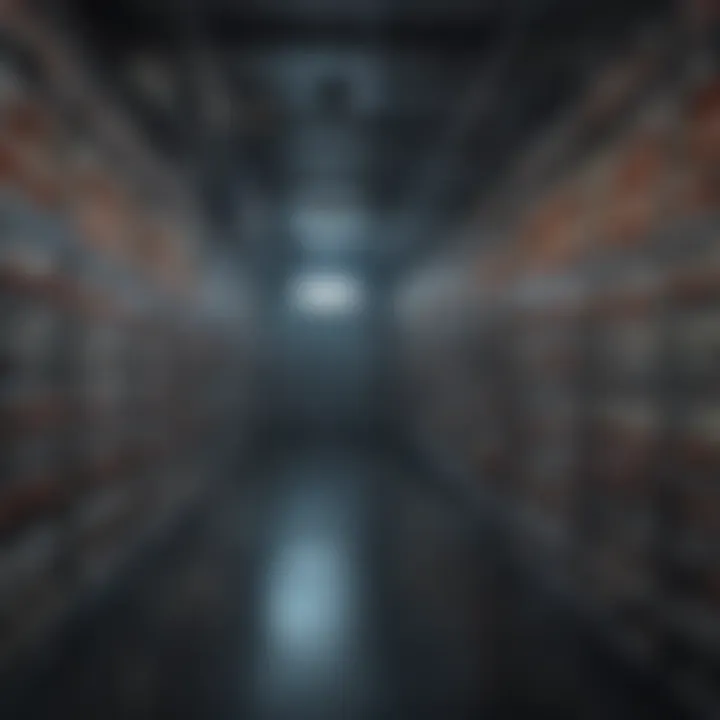
Intro
In the landscape of biomedical research, certain cell lines have emerged as critical to understanding complex biological processes. One such cell line is the U937, derived from human monocytic origin. These cells are invaluable for their ability to mimic immune responses and offer insights into various pathological conditions. Gaining a precise grasp of U937 cells—their characteristics, applications, and implications—opens a window into advancing both scientific inquiry and therapeutic strategies.
As the field of biomedical research continuously evolves, U937 cells have managed to stay relevant thanks to their unique traits. They serve not only as a platform for understanding immune system dynamics but also have implications in areas like cancer research and drug discovery. By dissecting their features and roles, researchers gain clearer perspectives on their potential usage and the ethical considerations that come into play.
In the sections that follow, this analysis aims to highlight key findings from recent studies, discuss historical contexts leading to current trends, and unpack the manifold applications of these cells. Understanding U937 cells also necessitates considering the methodologies adopted for research, as these influence outcomes and dictate future exploration paths.
From foundational knowledge to practical uses, this article intends to create an informative guide that elucidates the significance of U937 cells in research.
Prolusion to U937 Cells
Understanding U937 cells is pivotal for those involved in biomedical research. These cells serve as a benchmark in the analysis of immune functions and disease mechanisms. Recent advances in health sciences have reiterated the significance of these human monocyte-like cells, particularly in immunology and cancer biology. Exploring their multifaceted applications provides researchers with fundamental insights into the immune system and potential therapeutic strategies.
Definition and Origin
U937 cells are an immortalized cell line derived from a 37-year-old male with a histiocytic lymphoma. They are classified as a human monocytic cell line and are widely viewed as a crucial model for studying monocyte differentiation and activation.
When placed in optimum conditions, U937 cells can mimic several properties of human immune cells, making them invaluable in laboratory settings. Due to their unique nature, researchers can utilize them to study cellular responses to various stimuli, which is essential for understanding diseases and developing new therapies.
History of U937 Cell Line Development
The U937 cell line was first established in the 1970s at the German Cancer Research Center in Heidelberg. Researchers sought to discover a rich source of cells for studying monocyte lineage and ways to transform these cells into macrophage-like entities. The pivotal publication by E. P. H. B. Thiel et al. in Journal of Immunology laid the groundwork for understanding U937’s application in immunological research.
Since then, U937 cells have been the subject of extensive studies, leading to significant breakthroughs in cancer research, pharmacology, and a deeper comprehension of immune responses. For instance, the ability to differentiate into cells resembling macrophages or dendritic cells has made them a cornerstone in various experimental protocols, especially for testing new drugs.
Researchers have appreciated the adaptability of U937 cells and their contribution to the evolving landscape of immunology and cellular biology. While progress continues, the development history of the U937 line showcases its integral role in enhancing our knowledge of human health and disease.
Biological Characteristics of U937 Cells
Understanding the biological characteristics of U937 cells is vital for their application in a myriad of research fields. These unique features enable researchers to explore various physiological processes and develop therapeutic approaches. The insights garnered from studying U937 cells can drive innovations in immunology, oncology, and pharmacology, demonstrating their multifaceted importance.
Morphology and Growth
U937 cells exhibit a distinct morphology that signifies their monocyte-like nature. Under a microscope, they appear as large, round cells with a generous cytoplasm and noticeable nuclei. This shape is not just for looks; it plays a role in how they interact with their environment, including other cells and pathogens.
Their growth pattern is also noteworthy. U937 cells can thrive in suspension culture, meaning they don’t necessarily need a solid substrate to grow. This characteristic is practical for scaling up experiments for drug testing or immunological studies. In ideal conditions, U937 cells can double in approximately 24 hours, making them conducive for investigations that require rapid cell proliferation.
Cell Cycle Dynamics
A fundamental aspect of cell biology is the cell cycle, and understanding the dynamics of U937 cells provides insight into their behavior. U937 cells usually progress through the typical phases of the cell cycle—G1, S (synthesis), G2, and M (mitosis). However, they exhibit unique regulation mechanisms in response to external stimuli, such as cytokines or other signaling molecules.
When these cells receive signals, they can be prompted to enter the cell cycle, leading to growth and division. This responsive nature makes U937 cells an excellent model for studying immune responses. As they react to various cues, researchers can track how these changes can affect immune cell function or tumor microenvironments.
Surface Markers and Molecular Profile
Studying the surface markers and molecular profile of U937 cells unveils a wealth of information regarding their behavior and functional capabilities. Key surface markers include CD14, CD11b, and CD68, which are significant for identifying monocyte lineage and their interactive roles in the immune system. These markers serve as vital tools for researchers, helping to elucidate the cells' activation states and their participation in various immune responses.
Furthermore, the molecular profile of U937 cells also includes an array of cytokines and receptors that are pivotal in inflammation processes. For instance, the expression of TNF-α or IL-6 reveals their involvement in inflammatory responses.
By comparing the profiles of U937 cells under different experimental conditions, it’s possible to glean insights into how these cells react to disease states or therapeutic interventions. This information can be immensely beneficial in developing targeted treatments for autoimmune disorders, infections, or malignancies.
"U937 cells not only provide a window into monocyte biology but also act as a platform through which therapeutic strategies can be tested and refined."
Applications of U937 Cells in Research
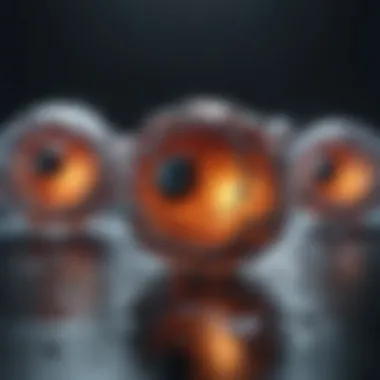
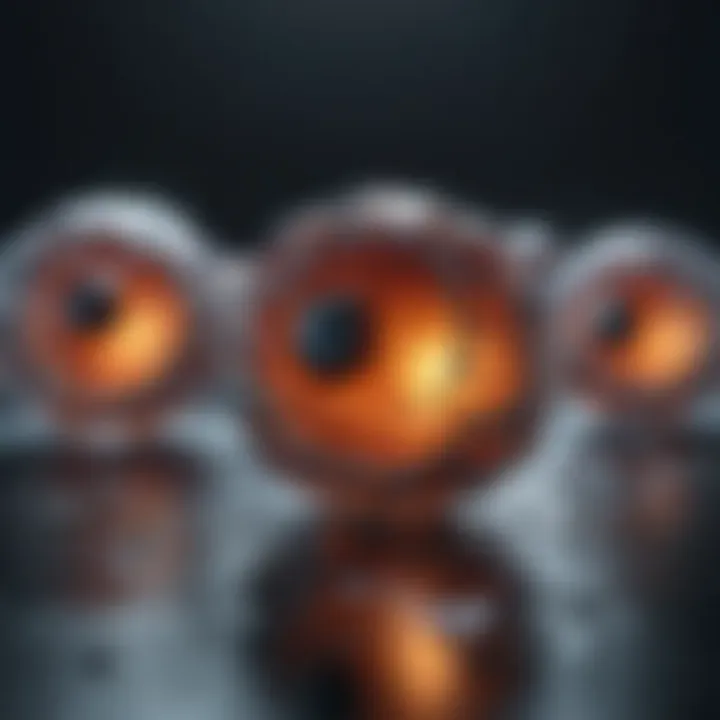
The utilization of U937 cells in research is more than a blip on the radar; it’s a cornerstone in various fields such as immunology, oncology, and pharmacology. These human monocyte-like cells provide a unique platform for mimicking in vivo conditions because of their versatile nature. Researchers value U937 cells for their ability to differentiate into macrophage-like cells when stimulated. This means they can help simulate the human immune system's response or explore tumor biology effectively. Furthermore, they possess the potential to serve an array of research purposes, each coming with its own set of advantages and challenges.
Role in Immunology Studies
U937 cells are pivotal in immunology research, making them a preferred model for studying immune responses. Their ability to transform into macrophage-like cells enables researchers to investigate how these cells interact with various pathogens and other immune cells. For instance, studies often investigate how U937-derived macrophages respond to bacterial infections, examining cytokine release patterns and the subsequent activation of other immune cells.
Using U937 cells allows for a simplified and standardized approach when testing hypotheses related to immune responses compared to primary cells, which often show variability. This reliability lays the groundwork for findings that can lead to breakthroughs in vaccine development and the understanding of autoimmune diseases.
- Advantages of using U937 cells in immunology include:
- Consistency in experimental results
- Ease of cultivation and manipulation in labs
- Ability to study interactions with pathogens directly
Comparatively, the limitations are worth noting, particularly how U937 cells might not fully replicate the heterogeneity present in vivo.
Cancer Research Applications
When it comes to cancer research, U937 cells shine brightly in multiple dimensions. Often employed for studying lymphoma and leukemia, these cells facilitate the understanding of cancer cell biology, especially concerning their interactions with the immune system. For example, researchers can manipulate U937 cells to express cancer-specific antigens, enabling them to explore the immune response against tumor cells in a controlled environment.
Furthermore, they also act as a beacon in studying the efficacy of new cancer therapies. By examining how U937 cells respond to various chemotherapeutics, scientists gain insight into drug resistance mechanisms and discover potential combination therapies that enhance treatment outcomes.
Some key benefits of employing U937 cells in this realm are:
- The ability to mimic tumor microenvironments
- Providing a platform for testing new drugs in preclinical stages
- Offering insights into the mechanisms of cancer immunotherapy
Nevertheless, one must remember that while these cells are a powerful tool, they also have limitations. They do not always reflect the complexity of solid tumor environments, which can lead to gaps in understanding when translating findings to patient care.
Drug Testing and Pharmacology
In pharmacology, U937 cells serve a significant role in the evaluation of drug effects and mechanisms. Researchers can utilize these cells to ascertain the cytotoxicity of compounds and gauge potential toxic effects before proceeding to more complex trials. The ability to culture U937 cells provides a practical approach for high-throughput screening processes, enabling the identification of viable drug candidates efficiently.
Moreover, U937 cells can be transformed to model specific disease states, aiding in the assessment of drug efficacy under varied biological conditions. For instance, they can be treated with inflammatory cytokines to reflect a pathological state and test how well potential drugs can mitigate such inflammatory responses.
Benefits of using U937 cells in drug testing include:
- Simplified methods for studying drug interactions
- Ability to create disease-relevant states
- Potentially reduced reliance on animal models for early-stage drug discovery
Yet, pharmacological research using U937 cells is not without challenges. The cells might react differently than primary human cells, which may lead to discrepancies when translating results to clinical settings.
The versatility and adaptability of U937 cells make them a powerhouse in advancing our understanding of human pathologies and the development of innovative treatment strategies.
Cultivation and Maintenance of U937 Cells
Cultivating and maintaining U937 cells is not just a mundane task; it’s a crucial aspect that underpins their effectiveness in various experimental designs. These human monocyte-like cells require precise conditions to thrive, which in turn ensures reliable outcomes in research. Understanding the nuances of their growth requirements directly influences the reproducibility and accuracy of experiments in fields like immunology and cancer research.
Optimal Growth Conditions
For U937 cells to flourish, specific growth conditions must be met. These cells thrive in a controlled environment similar to their natural habitat. Key factors include:
- Temperature: U937 cells prefer a temperature of 37°C. Any deviation can impact their metabolic processes.
- Atmosphere: A 5% CO2 environment is typically maintained to replicate physiological conditions.
- Medium: RPMI 1640 supplemented with 10% fetal bovine serum (FBS) provides vital nutrients and growth factors. It’s vital to filter the medium through a 0.22 μm filter to remove contaminants.
- Density: Cell density also plays a role. Culturing U937 cells between 0.3 – 0.8 million cells per mL ensures they have ample space to grow without becoming overcrowded, reducing the risk of differentiation into macrophage-like cells.
The careful observation of these parameters can significantly enhance the yield and quality of U937 cell cultures. Healthy cells not only ensure that research findings are robust but also mitigate the likelihood of experimental errors. The diligence shown in monitoring these conditions is akin to nurturing young plants to fruition.
Handling and Preservation Techniques
Once cultivated, handling and preservation of U937 cells is critical for long-term use. Improper handling can lead to cell loss or alteration of their intended characteristics. Here are some best practices:
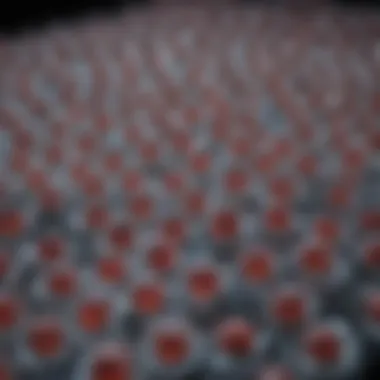
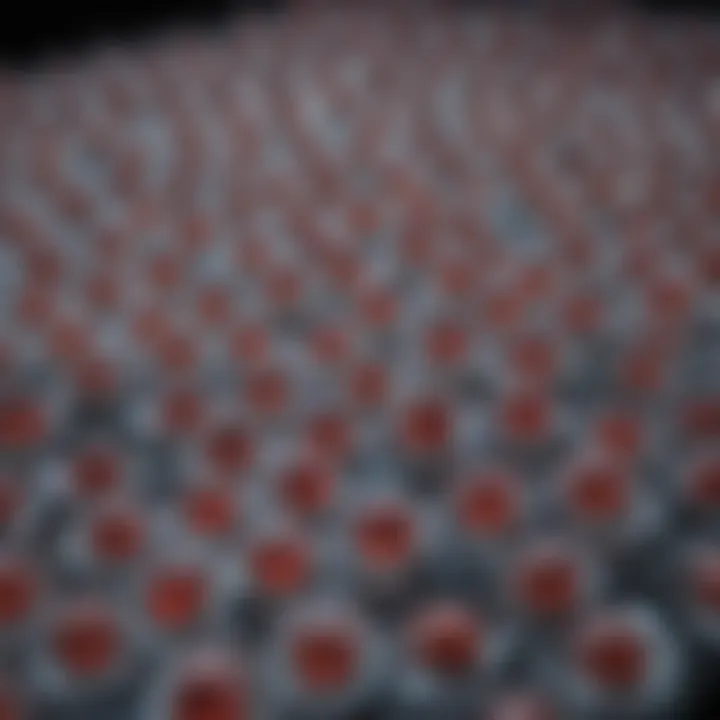
- Aseptic Technique: Always work in a sterile environment. Utilizing a biosafety cabinet minimizes contamination risks, ensuring that the U937 cells remain pure.
- Passaging: Regular passaging is necessary to maintain cell health and prevent senescence. This is typically done every 2-3 days, making sure that the cell concentration does not exceed 80-90% confluence.
- Cryopreservation: To store U937 cells for future use, they are often frozen. A cryopreservation solution containing 10% dimethyl sulfoxide (DMSO) and 90% FBS is commonly used. When freezing, it is crucial to cool the cells at a rate of 1°C per minute until reaching -80°C, and then transfer to liquid nitrogen for long-term storage.
- Thawing: When ready to use frozen cells, quickly thaw them in a 37°C water bath. This minimizes ice crystallization damage. After thawing, immediately dilute the cells in fresh culture medium to decrease DMSO toxicity.
Maintaining the integrity of U937 cells through efficient handling and preservation techniques helps researchers retain the cellular characteristics essential for experimental accuracy. Proper care transforms these cells from mere biological specimens into powerful tools in the quest for knowledge in the biomedical field.
"The success in U937 cell culture lies not just in the numbers but in how they are nurtured and introduced into the research stream."
Mechanisms of Action in U937 Cells
Understanding the mechanisms of action in U937 cells is crucial in the broader context of biomedical research. These cells, having monocyte-like characteristics, provide a unique model to study various biological processes, including immune response and disease pathology. The insights gained from studying their mechanisms can propel advancements in therapies for numerous conditions, particularly those related to immunology and oncology.
Cellular Response to Stimuli
U937 cells exhibit a fascinating ability to respond to a variety of external stimuli. This response is vital for mimicking the behavior of natural immune cells. For instance, when exposed to pro-inflammatory cytokines such as TNF-alpha or IL-1 beta, U937 cells undergo a series of changes that prepare them for various functions. These changes can include adhesion to endothelial cells, increased phagocytotic activity, and the production of reactive oxygen species.
The adaptability of U937 cells makes them a valuable resource for investigating how immune cells respond in various states of health and disease. Different signals can induce differential expression of genes involved in inflammation, apoptosis, and survival mechanisms.
Moreover, studying these responses helps researchers understand how various stimuli can impact cell behavior. For instance, the activation of U937 cells by lipopolysaccharide (LPS) is often used to simulate bacterial infection. This is where the immune system’s readiness to fight infection can be tested, giving vital information about how monocytes might react to actual pathogens.
"Investigating the cellular responses of U937 cells to external stimuli provides a window into the complexities of immune system functioning."
Signaling Pathways Involved
The signaling pathways active in U937 cells are intricate and engaging. Key pathways include the NF-kB, MAPK, and PI3K/Akt pathways, each playing distinct roles in mediating cellular responses.
- NF-kB Pathway: Activated by various ligands, this pathway often links to inflammation. When U937 cells are stimulated, NF-kB translocates to the nucleus and initiates the transcription of various pro-inflammatory cytokines. This pathway is indicative of the role of U937 cells in immune response and inflammation, shedding light on their potential involvement in chronic inflammatory diseases.
- MAPK Pathway: This pathway can be activated by stress signals and is crucial for controlling various cellular functions, including differentiation, proliferation, and apoptosis. In U937 cells, MAPK pathways help mediate responses to cytokines and growth factors, hence influencing survival and growth rates.
- PI3K/Akt Pathway: This is mainly involved in cell survival and growth. When activated, it fosters metabolic processes that contribute to cell growth and proliferation. This makes U937 cells a fitting model for cancer research, particularly in studying how oncogenic signals might alter normal cell functions.
Understanding these pathways allows for a sharper lens into how U937 cells contribute to immunological studies and therapeutic research. With every pathway documented, it becomes clearer how targeting these signaling mechanisms can lead to better treatments and understanding of immune-related disorders.
Limitations and Challenges of Using U937 Cells
While U937 cells have become a staple in biomedical research, it's crucial to recognize that they come with a set of limitations and challenges which can impact the outcomes of experiments. Understanding these constraints is not just a minor detail; it's essential for researchers who aim to use these cells effectively. By acknowledging the challenges, scientists can better design their studies and interpret data with a critical eye.
Biological Variations
U937 cells, being a human-derived cell line, inherently exhibit biological variations that can influence experimental results. These variations can stem from several factors:
- Genetic Drift: Over time, cell lines can undergo mutations, leading to genetic drift. This might alter their behavior and responsiveness. For instance, a U937 cell line culture maintained for years could exhibit different characteristics compared to its original form used in early experiments.
- Differentiation Potential: U937 cells have the ability to differentiate into macrophage-like cells when stimulated. This can be beneficial, but it also means that the results obtained from these cells might vary significantly based on their state at the time of experimentation. Researchers may find it challenging to control or replicate the differentiation states in subsequent experiments.
- Microenvironment Effects: The conditions under which U937 cells are cultured can greatly affect their phenotype and function. Factors like serum batch variability, pH, and oxygen concentration can result in inconsistencies. Such variations might skew immune response studies, making it difficult to compare results across different labs.
Laboratory practices, thus, play a pivotal role in ensuring consistency in results. Establishing a defined protocol can mitigate some of these issues, but the innate variability remains a significant hurdle.
Experimental Constraints
Utilizing U937 cells also presents distinct experimental constraints that researchers must navigate. These constraints are critical to consider at each stage of experimental design and interpretation:
- Limited Functional Assays: While U937 cells serve as a model for immune response and cancer studies, their utility in certain functional assays is limited. Not every biological pathway can be appropriately modeled using U937 cells. Researchers need to be cautious about extrapolating findings to in vivo situations.
- Adaptation to Culture Conditions: U937 cells can adapt to in vitro conditions, leading them to behave differently than monocytes in a natural state. Their response to stimuli may not accurately reflect physiological immune responses. This dissonance can mislead interpretations of drug efficacy or immune interactions.
- Contamination and Control: Like all cell cultures, U937 cells can be susceptible to contamination by mycoplasma or other microorganisms. This can significantly compromise the integrity of results. Vigorous monitoring and strict aseptic techniques are essential to minimize these risks. Plus, maintaining well-characterized controls is important to differentiate genuine experimental effects from artifacts caused by such contamination.
"Recognizing the limitations tied to U937 cells is just as important as celebrating their contributions to research. A critical eye can uncover new insights and help navigate past challenges."
In summary, while U937 cells are powerful tools in the research arsenal, their limitations are multi-faceted and warrant careful consideration. By being aware of biological variations and experimental constraints, researchers can design better studies and draw findings that are more robust and insightful. As challenges persist, future research may benefit from complementary models that can bridge the gap between in vitro findings with in vivo applications, thereby enhancing the overall quality and relevance of research outcomes.
Future Directions in U937 Cell Research
As we look ahead, the realm of U937 cell research stands to undergo transformative developments. These cells, recognized for their robust applications in immunology and oncology, are poised to ascend to new heights through innovations and technological advancements. The emphasis on future directions not only underscores the ongoing relevance of U937 cells but also expounds on their potential to further scientific inquiry and medical breakthroughs.
Innovations in Cell Biology
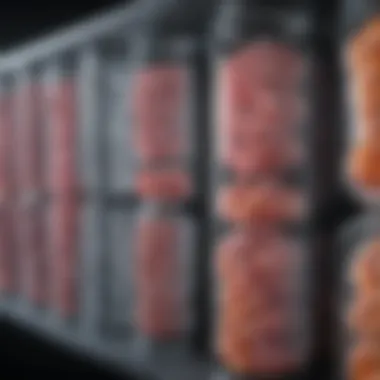
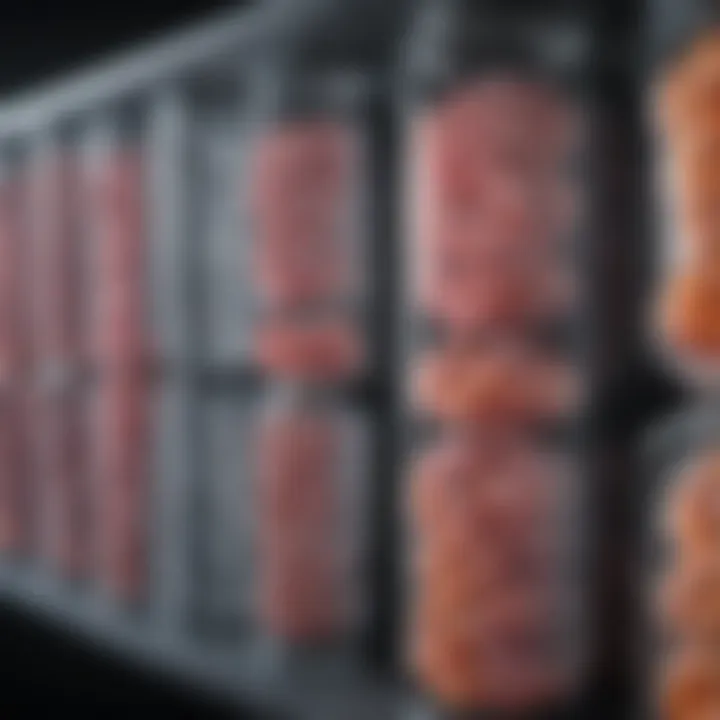
One area rich with promise involves the innovations in cell biology that aim to enhance the functionality and applications of U937 cells. Researchers are investigating ways to manipulate the cells’ genetic compositions to achieve precise alterations in their behavior and characteristics. For instance, CRISPR technology has opened the floodgates of possibilities. The ability to use CRISPR to knock out or edit specific genes within U937 cells can lead to a better understanding of disease mechanisms. By doing so, scientists could create cell lines that better mimic certain pathological conditions, providing more accurate models for investigation.
Moreover, the integration of artificial intelligence and machine learning into cell biology is gradually reshaping the landscape. Algorithms can analyze vast datasets from U937 cell experiments to identify novel patterns or biomarkers relevant to diseases. Such approaches might accelerate the identification of promising therapeutic targets within cancer and immune response pathways. Thus, the crossroad of cell biology and computational techniques holds the potential to expedite drug discovery while minimizing the conventional timelines that plague biomedicine.
The future is bright for U937 cells, especially as innovations in gene editing and AI reshape our understanding of complex diseases.
Emerging Techniques and Technologies
Alongside these innovations, emerging techniques are also set to play a pivotal role in the evolution of U937 cell research. One notable approach is the adoption of organ-on-a-chip technologies, which allow researchers to create microenvironments that mimic human physiological conditions. By integrating U937 cells into these platforms, it’s possible to assess their responses to drugs and other stimuli in a more realistic setting, which can yield insights that traditional culture methods may overlook.
Furthermore, single-cell analysis techniques are gaining traction. These methods permit the examination of individual U937 cells rather than averaging responses across a population. Such granularity can help uncover heterogeneity within cell populations, which is crucial in understanding variations in drug response and immune function among different individuals.
In addition, advancements in 3D cell culture are transforming how we view interactions between U937 cells and their environments. This can be particularly beneficial in studying tumor microenvironments, where U937 cells might engage with malignant cells, immune cells, and extracellular matrices in multi-dimensional formats. Such technologies will continuously improve the relevance of U937 cells in cancer research and therapeutic testing by providing a more holistic view of cell behavior.
In summary, the future directions in U937 cell research are multifaceted. From gene editing innovations to cutting-edge microenvironment simulations, the enhancements on the horizon signal an exciting period of discovery and application. By staying at the forefront of these advances, researchers are likely to unlock deeper insights into immune response mechanisms and cancer biology, paving the way for new therapeutic avenues.
Ethical Considerations in U937 Cell Research
When engaging with U937 cells in research, ethical considerations become paramount. This revolves around their derivation from human tissues and the implications associated with using such materials. These cells serve important roles in immunology and cancer research, but they also present ongoing ethical questions that researchers must navigate with care.
Use of Human-Derived Cells
The U937 cell line is derived from a human source, which is a key element in understanding their ethical implications. Research that utilizes human-derived cells raises concerns about consent, the source of biological materials, and, ultimately, the welfare of those who provide them. It's not just about whether the cells can be used; it’s also about how they are obtained.
- Informed Consent: One critical aspect of using human-derived cells is the acquisition of informed consent from the individuals from whom the cells are taken. Researchers must ensure that participants understand what their cells will be used for and have given permission willingly.
- Transparency: It is essential to maintain transparency regarding how the cell lines are utilized in research. This includes publishing findings in a way that honors the original contributors, allowing the public to see the implications of their biological contributions.
- Cultural Sensitivity: Recognizing that human cells come with individual histories and cultural backgrounds, researchers must approach their work with sensitivity to how these issues may affect donors or communities from which samples are derived.
These facets not only assist in maintaining ethical research practices but also bolster public trust in scientific endeavors.
Regulatory Frameworks and Compliance
The landscape surrounding the ethical usage of U937 cells is significantly shaped by regulatory frameworks. Compliance with these regulations ensures that researchers uphold the highest ethical standards throughout their work.
- Guidelines from Institutions: Various regulatory bodies, including the National Institutes of Health (NIH) and the World Health Organization (WHO), provide guidelines that govern the use of human-derived cells in research. These guidelines help make sure that ethical considerations are not merely an afterthought but rather integral to the research process.
- Oversight Committees: Institutional Review Boards (IRBs) play an essential role in reviewing research proposals involving U937 cells. They assess whether the study design adequately protects the rights and welfare of human participants, ensuring compliance with ethical standards and federal regulations.
- Long-Term Accountability: Regulations also stress the importance of long-term accountability in research practices. Researchers are expected to follow not just initial protocols, but also to report any adverse effects or ethical concerns that arise during the research process.
"Ethics in research isn't an optional add-on; it's the foundation upon which we build trust and credibility in the scientific community."
This call for responsibility emphasizes that as the field evolves, so too must our approach toward the ethics of using human-derived cells.
Culmination
The conclusion serves as the capstone of this exploration into U937 cells, driving home the essential insights garnered throughout the article. The importance of understanding U937 cells cannot be overstated; they represent a pivotal component in contemporary biomedical research. As a cell line that closely mirrors human monocyte behavior, U937 cells enable scientists to delve into key areas such as immunology, cancer biology, and pharmacological assessments. The distinct characteristics, such as their ability to differentiate and mimic immune responses, provide a unique platform for experimentation and discovery.
Highlighting the myriad applications of U937 cells, from drug testing to insights into immune responses, underscores their versatility and significance. Researchers rely on this cell line not just for its accessibility but also for the robust data it yields, which can often be extrapolated to more complex human systems.
"U937 cells are not merely tools; they are windows into the intricacies of human physiology and disease."
Through rigorous maintenance and cultivation techniques, the integrity of experimental findings can be assured, thus fostering a more profound trust in resultant data. As biomedical research continues to evolve, the ethical considerations surrounding the use of such human-derived cell lines also become more critical. Maintaining compliance with regulatory frameworks while ensuring scientific progression is an ongoing challenge that demands attention.
Recap of Key Insights
In summary, several key insights emerge from this article:
- U937 cells are derived from a human monocyte-like cell line, making them instrumental in understanding immune responses.
- Their applications span across critical fields, including cancer research and pharmacology.
- Cultivation and maintenance are crucial for ensuring the reliability of experimental results.
- Ethical considerations must align with the use of these cells to ensure respect for human-derived biological materials.
Implications for Future Research
Looking ahead, the exploration of U937 cells presents an abundance of possibilities for extending research into novel therapeutic approaches and understanding complex disease mechanisms.
- Continued advancements in cell culture techniques may enhance the reliability of U937 cells in reflecting in vivo conditions, fostering more accurate predictions of clinical outcomes.
- The incorporation of emerging technologies like CRISPR for genetic modifications could unlock further avenues of research.
- Partnering U937 cells with other model systems, such as organ-on-a-chip technologies, might provide insights that bridge the gap between traditional cell line studies and real-world human responses.
Given the adaptability of U937 cells, coupled with the growing focus on precision medicine, the future seems bright for their application in research. The responsibility now rests on the shoulders of current and upcoming researchers to harness these capabilities, all while maintaining robust ethical standards and compliance with necessary regulations.







